
Remnants of the once prosperous port of Sandwich in Kent still line its quay on the River Stour. Such was its importance that it was one of the original (and oldest) of the five Cinque Ports
Visitors to the town still cross the old toll bridge and drive through the Barbican Gate before threading their way along the narrow streets still lined with half-timbered buildings. The development of Sandwich was arrested when its river silted up and trading died down. Today only small pleasure boats and the river bus can be seen working on its waters. Beyond the river lies one of the best preserved medieval towns in England. The Guildhall is a prominent building in this small Kentish town and this was my first stop.
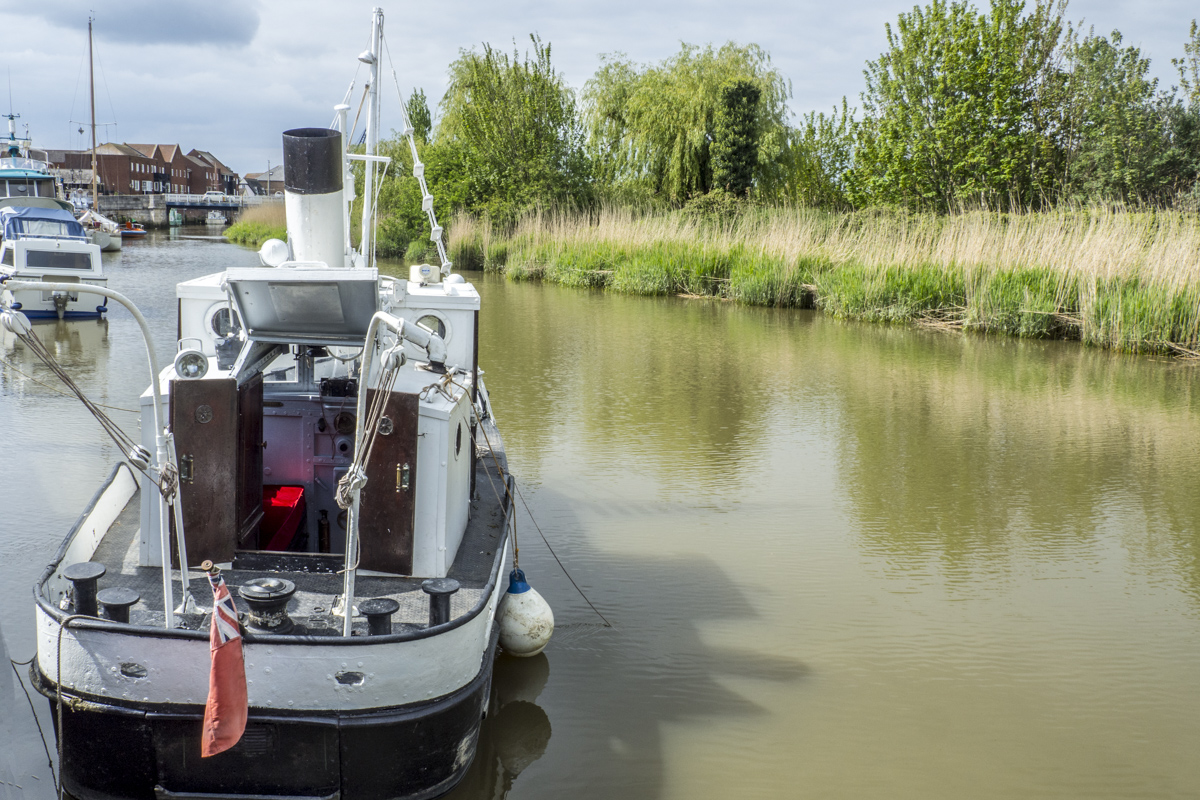
River Stour in Sandwich, Kent
The Guildhall
The town’s original Guildhall occupied what is now the cemetery of St Peter’s Church. Its ‘new’ Guildhall was built in 1579 but has been extended several times since then. Today this building performs four functions. It is the seat of the Town Council, it is a venue for weddings and other private functions, it houses the Tourist Information Office and it is a museum. This small museum relates the history of the town and includes some interesting historical artefacts. These include the twelfth century moot-horn that was used to bring the townspeople together and to sound the alarm during the French raids in the fifteenth century. For centuries the land around the Guildhall was used as a cattle market and was one of the busiest animal and general markets in East Kent. Now it is a large Pay and Display car park (free on Sundays).
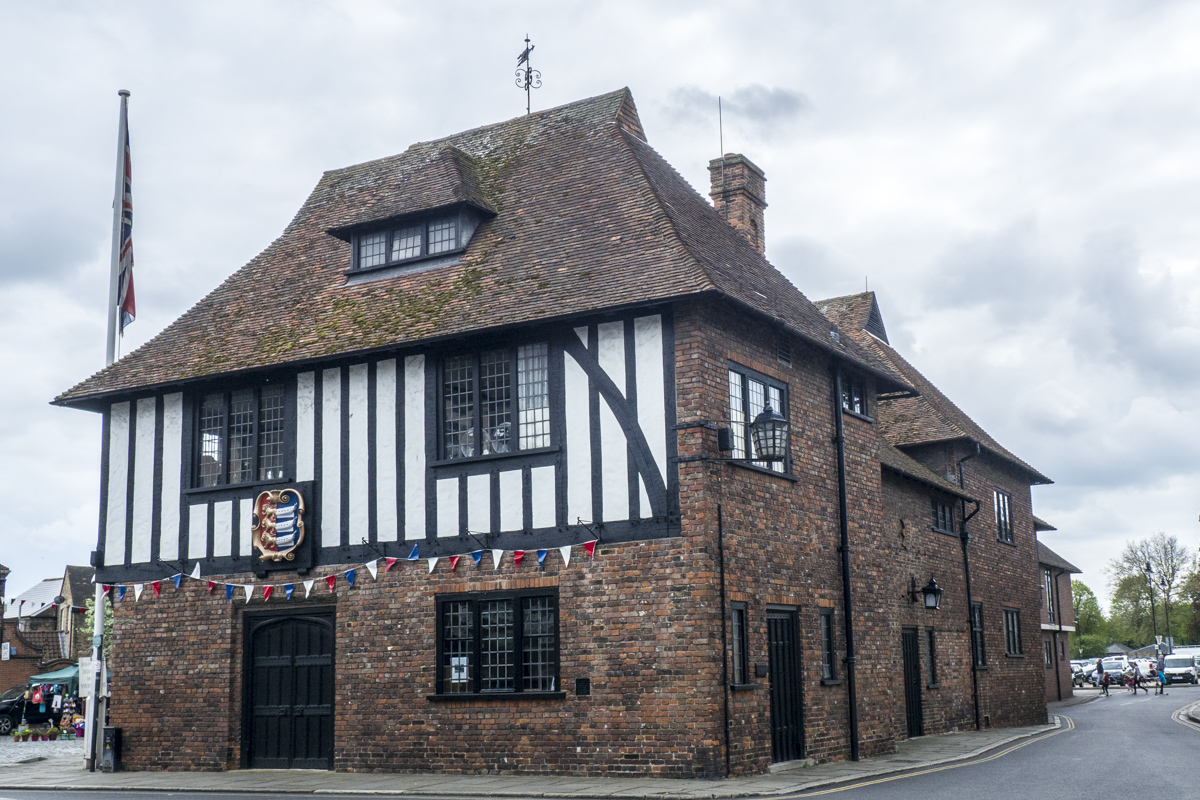
The Guildhall in Sandwich, Kent
On the ground floor of the Guildhall is an exact replica of the Courtroom that occupied the original Guildhall. This unique room has a collapsible jury box which can be hidden within the wooden panelling when not in use. A thirteenth century oak screen supports two of the Queen’s Beasts, a lion and a dragon. These originally decorated the town gate and were carved for the visit of Queen Elizabeth in 1572. Her visit is also commemorated by a stained glass window depicting the Mayor offering the Queen one of the Town’s maces as a token of loyalty. This occasion was the only time the mayor wore a scarlet robe rather than the usual black one that was worn as a sign of mourning for Mayor John Drury, killed by the French in the raid of 1457.
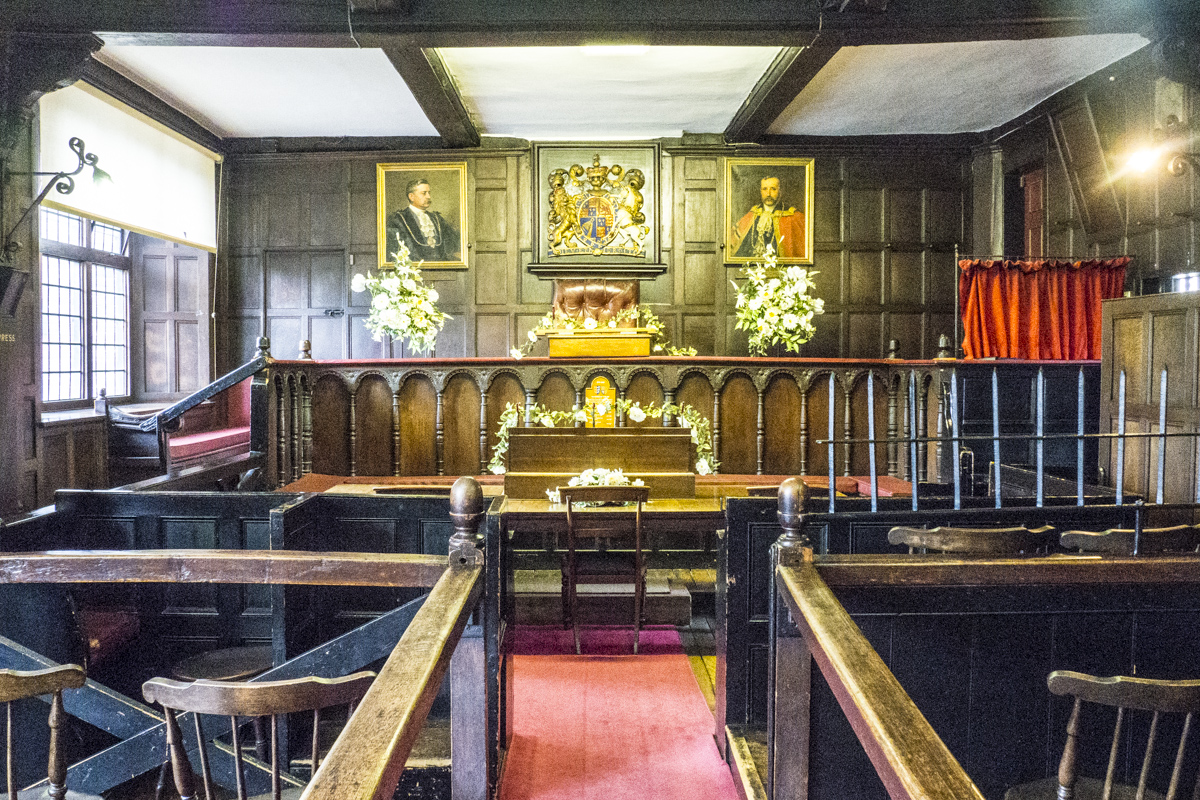
The Court Room in the Guildhall
King Street and St Peter’s Street
After leaving the Guildhall I made my way down King Street and then walked along St Peter’s Street to the church of the same name. These are two of the oldest streets and the town and both are lined with historical buildings. The buildings on King Street represent a mixture of different architectural styles. Of particular interest is the Old Dutch House. This typifies the Dutch style that was brought to Sandwich during the sixteenth and seventeenth centuries by Dutch and Flemish protestants escaping catholic oppression. Having been invited to settle in Sandwich they had a large impact here. They renovated and built many houses in their distinctive style. They also brought new trades and industries with them including weaving and market gardening. However, the townspeople resented them and referred to them as The Strangers. They were not allowed to become Freemen. Only Freemen could work and trade within the town walls. The modern shop fronts along this street are façades on much older buildings. Architectural features of the sixteenth and seventeenth centuries are still visible on this street.
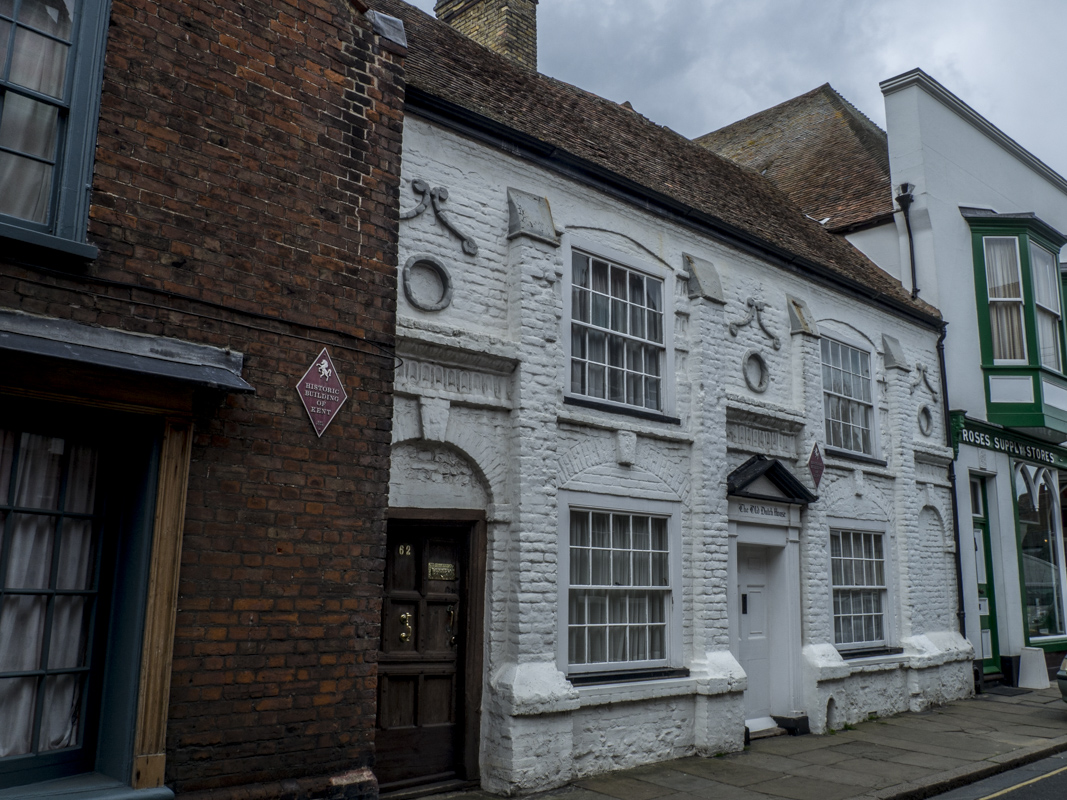
The Old Dutch House in King Street, Sandwich, Kent
St Peter’s Street is part of the old gird pattern of the medieval town of Sandwich. The old jail buildings can still be seen on this street that was once called Jail Street. Holy Ghost Alley (formerly Chantry Alley) is opposite the jail. This narrow winding passage led to the Delf Stream that was once the only place to get water. This Alley emerges in the High Street which is lined with many half-timbered and Georgian fronted buildings. There is also a cottage displaying an eighteenth century Sun Insurance Firemark. This was an indication to the insurance company’s private fire brigade that they could put out any fire breaking out on these premises.
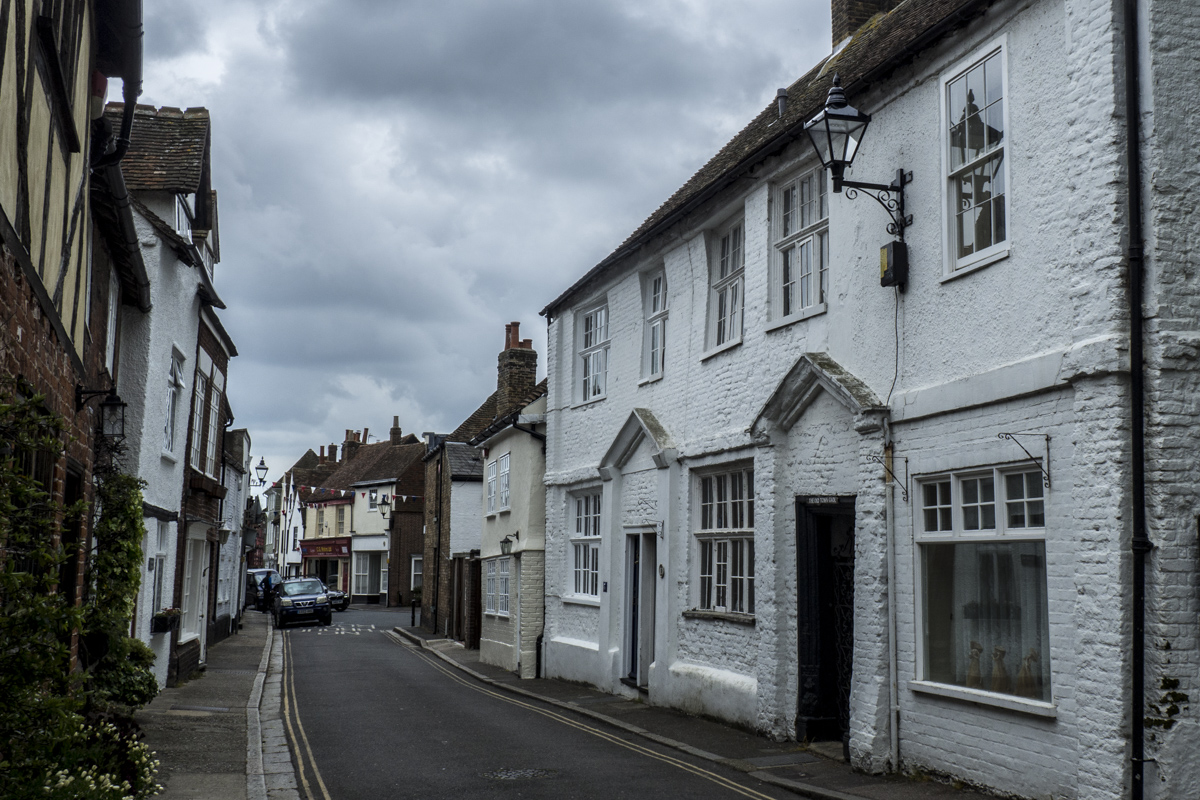
St Peter’s Street in Sandwich, Kent
St Peter’s Church and Tower
It is thought that the original eleventh century church on this site was destroyed during the French raids at the beginning of the thirteenth century. During the fourteenth century St Peter’s Church was rebuilt by Carmelite Monks from Normandy. It is one of three original parish churches the other two are St Mary’s and St Clements now the designated parish church although St Peter’s is the most interesting. Much of this fourteenth-century church can still be seen today. The south aisle was destroyed when the upper portion of the tower collapsed onto it in 1661 – it was never rebuilt. However, Flemish refugees did rebuild the tower using bricks made from the mud of the estuary known as Sandwich Haven mud. It was topped with a Flemish-style cupola. I was delighted to discover that visitors could climb the narrow winding stairs to the top of this tower. I was quick to take advantage of this and was soon fascinated by an aerial view of the medieval grid pattern of the streets below.
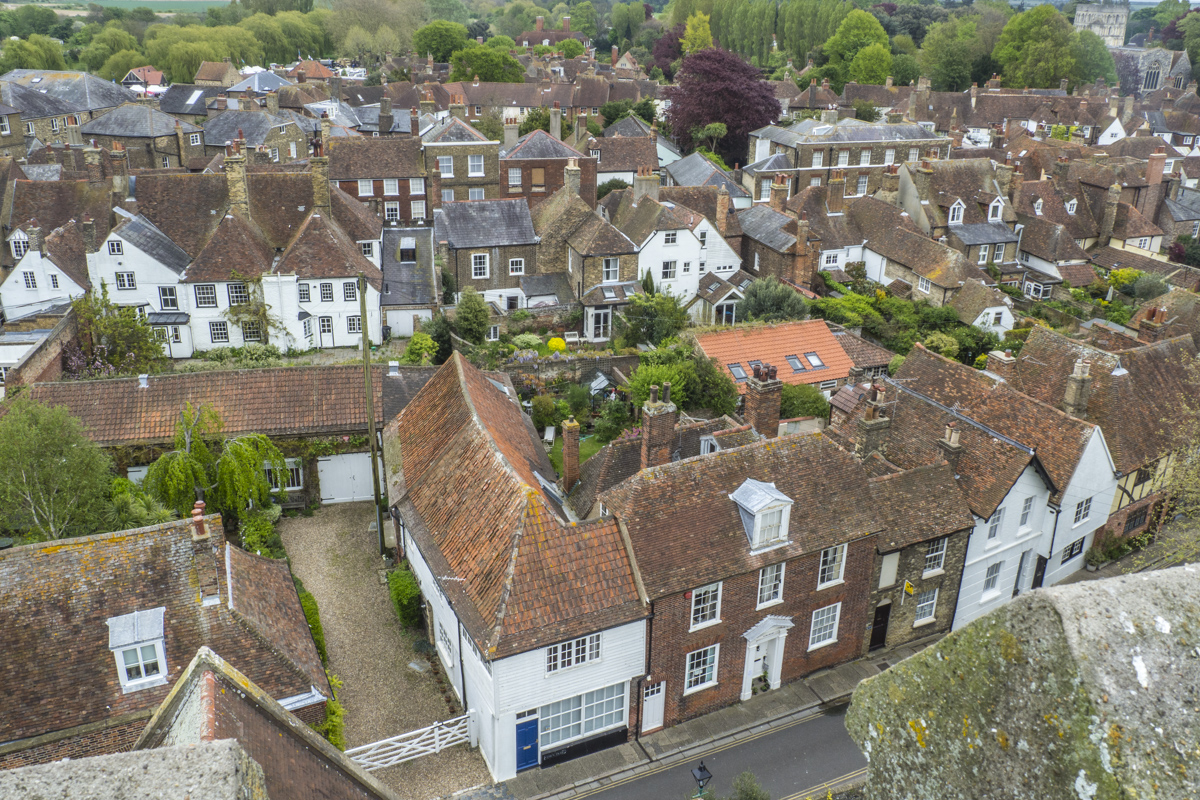
View from the Top of the Tower of St Peter’s Church
The Curfew Bell
The curfew bell is in the tower and the medieval tradition of ringing this bell at eight o’clock every evening continues to this day. It was a reminder that it was time to cover their fires. This was a safety measure because during the medieval period timber and thatch were mainly used for building purposes. This curfew bell, sometimes referred to as the ‘pig bell’ was also a signal that animals could be released into the streets to graze on the rubbish that had accumulated in the streets during the day. A ‘goose bell’ would be rung at 5 in the morning as a signal that it was time to round up all the animals and take them home. Fortunately, for the inhabitants this tradition has been abandoned. Eighteenth century additions to the tower include a clock and a carillon of eight bells.
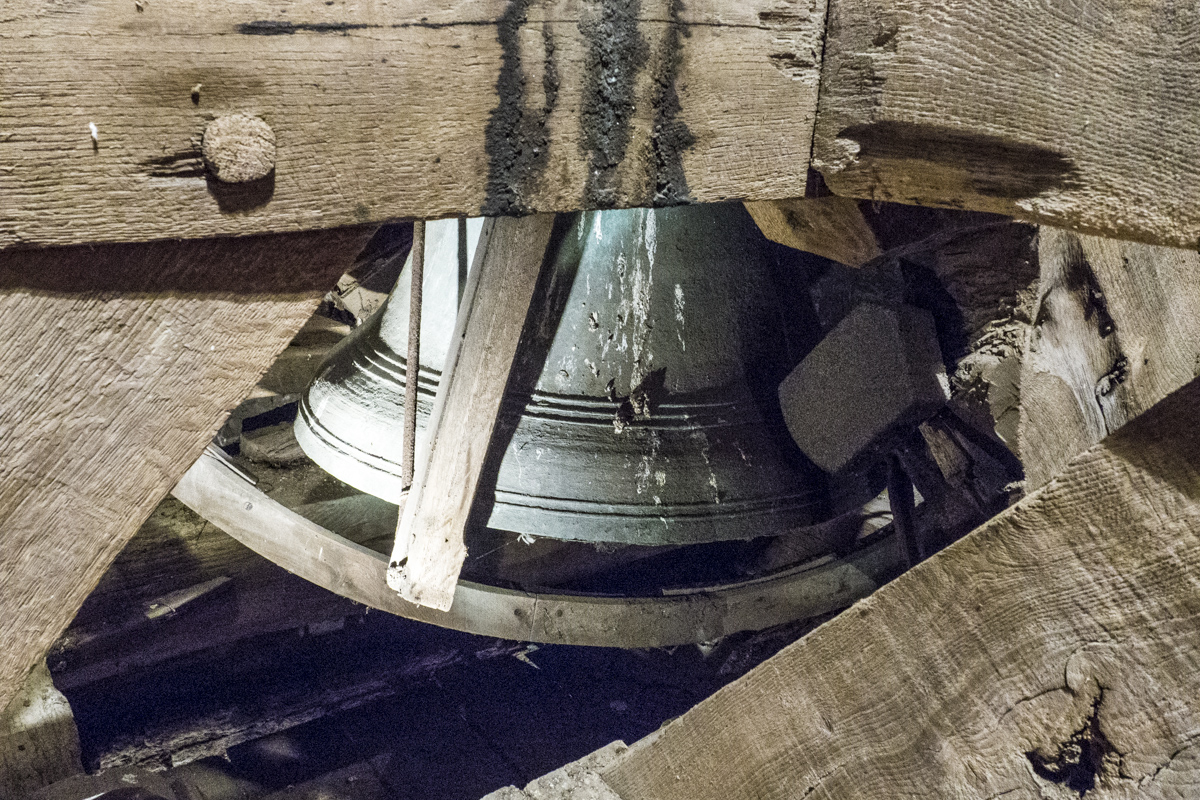
The Curfew Bell in the Tower of St Peter’s Church in Sandwich, Kent
The Town Walls
In 1385 it was decided that Sandwich should be fortified to protect itself from raids and invasions, mainly at the hands of the Vikings and the French. The town was encircled with walls. These walls were constructed from different materials. A strong wall of stone and brick was built along its river frontage. On the landward side the fortifications consisted of earth mounds, wooden palisades, a dry ditch and a moat. Gates set into the fortifications were built of stone. All ships docking in Sandwich were taxed to pay for the upkeep of these walls. Today the original earth wall, known as the Bulwark offers a pleasant walk through an avenue of trees on the outskirts of the town. The walls go right around the town and come back to the river near the Canterbury Gate. I left the walls to visit the gardens of The Salutation, a grand house close to the quay.
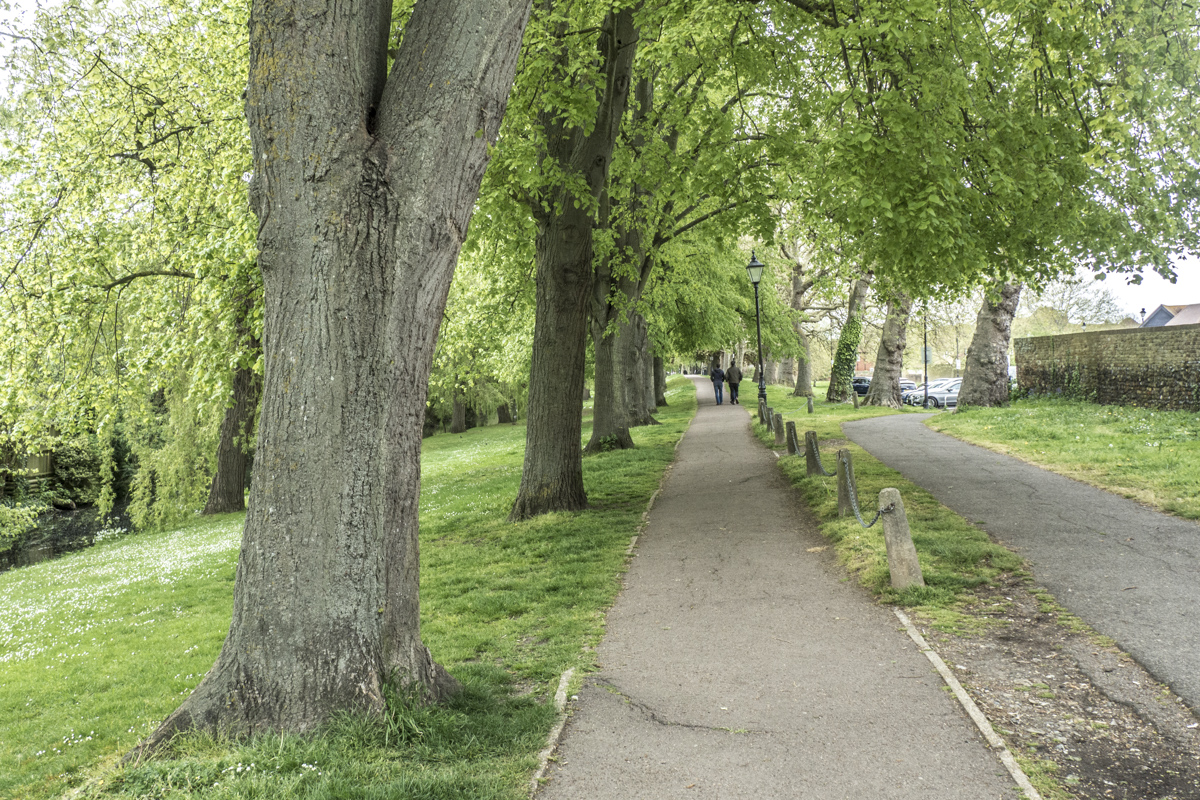
Walking the Town Walls of Sandwich in Kent
The Salutation Gardens
The Salutation, designed in the Queen Anne style by the famous English architect, Sir Edwin Lutyens, in 1912 is now a hotel and restaurant. The name is taken from the inn that once stood on this site. Its stunning gardens are open to the public. The Salutation Gardens may have been the inspiration of Gertrude Jekyll, with whom Lutyens often worked. But it has also been suggested that these gardens are a rare example of a project entirely developed by the architect himself. The gardens were laid out on the site of an old market garden that was probably set up by Flemish settlers in medieval times. They are surrounded by a high flint wall and are full of surprises. They remain true to the original spirit of the gardens which were laid out in the style of the Art and Crafts movement as a series of rooms. This series of rooms gives that impression that the garden is much larger than it actually is. Flower beds bursting with colourful blooms surrounds the old bowling green and narrow paths wander through a wooded area and through hedges to pretty little gardens. Throughout my wanderings I would get glimpses of the lovely old house in the background. Finally, I emerged on to the town quay.
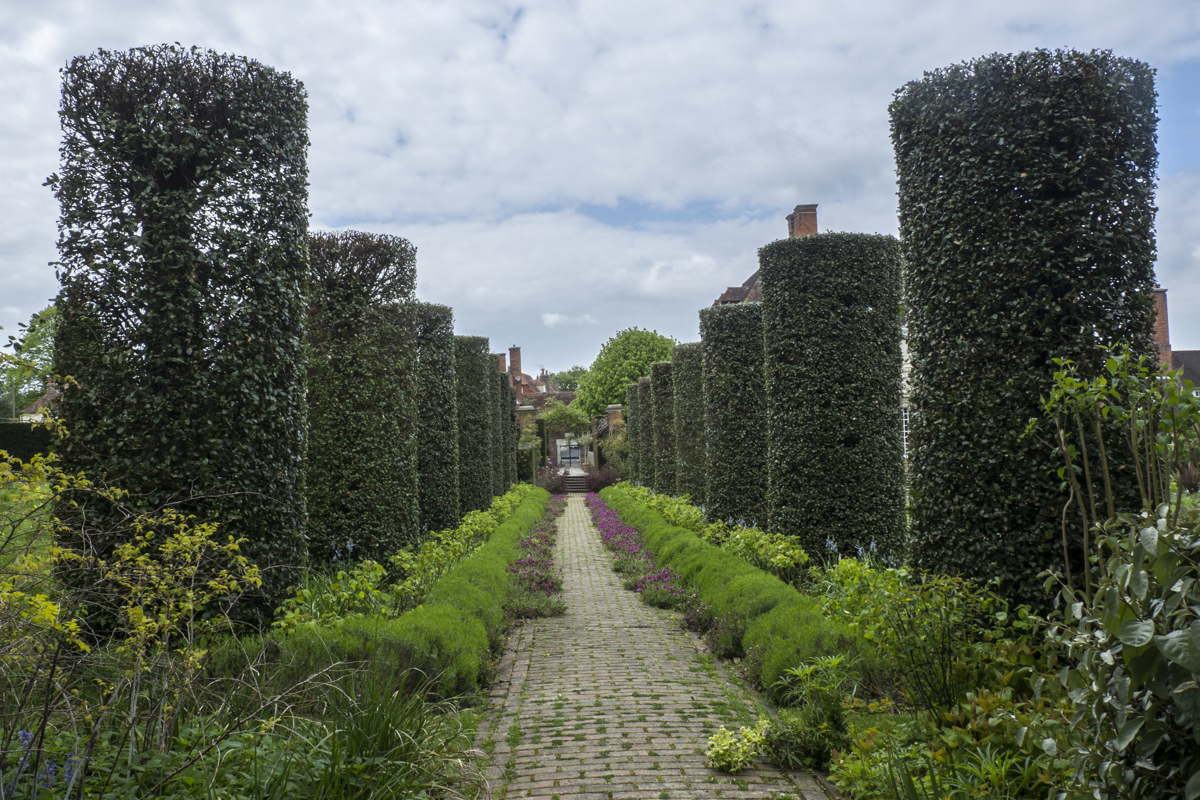
The Salutation Gardens in Sandwich, Kent
The Quay
Before the River Stour silted up its wide, sheltered estuary went down to the sea. Known at the Sandwich Have this estuary was a very successful medieval trading post and the town quay was the epi-centre. It is hard to believe that 700 ships assembled here before going to war against France under the command of the Black Prince. The Haven began silting up during the sixteenth century and by the eighteenth and nineteenth centuries the import of luxury goods had come to an end and only cargoes of timber, coal and salt were landed regularly. Boat building was carried on here until the beginning of the twentieth century. Now it is a popular place for recreation and relaxation. As I strolled along the quay I could hear the cars rattling over the toll bridge before entering the town through the Barbican Gate.
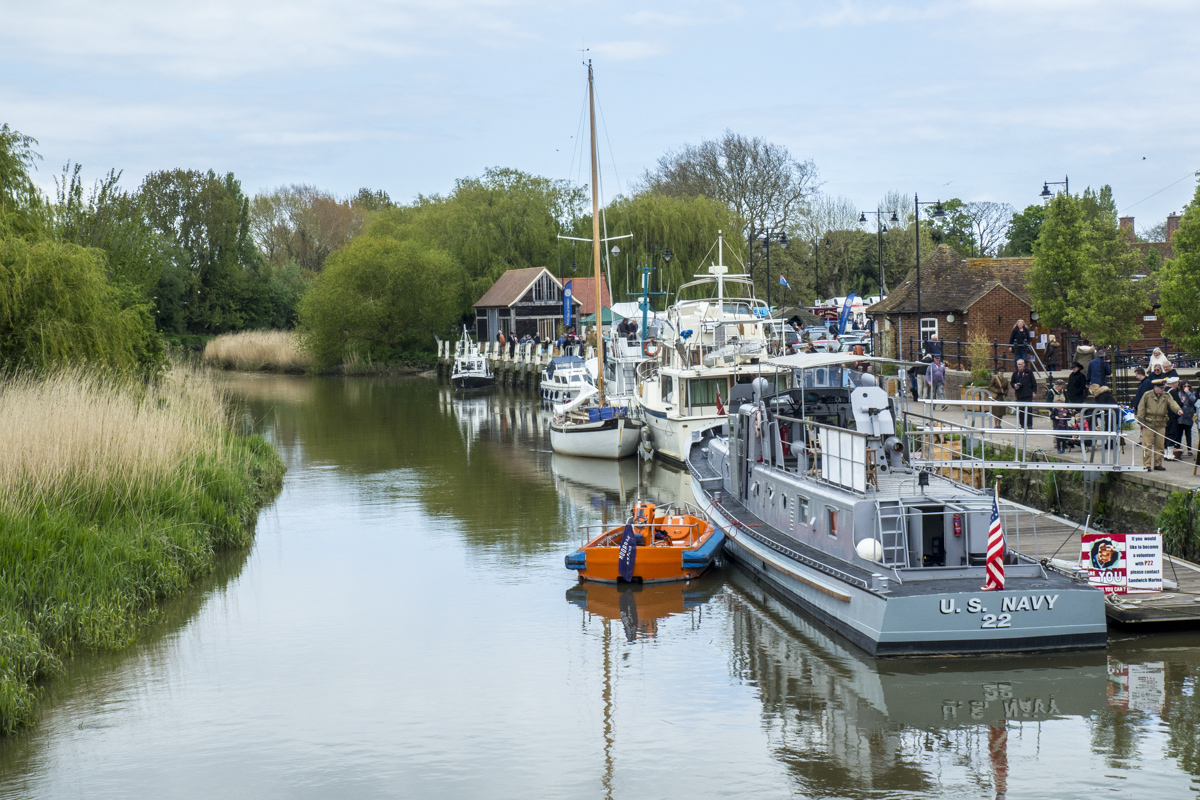
The Quay in Sandwich, Kent
The Toll Bridge and the Barbican Gate
As early as 1023 a Royal Charter was granted to the monks of Christchurch, Canterbury, to operate a ferry across the river and collect the fares. In 1759 this ferry was replaced by a Dutch-style drawbridge. The present swing bridge dates from 1891 and, until 1980, carried all the traffic between Sandwich and Thanet. Beneath the arch of the Barbican Gate (built around 1470) is a list of old toll charges for the bridge and a plaque recording their abolition in 1977. Three ancient inns are situated near the gate. The much altered Bell Hotel dates back to Tudor times. An interesting feature is the Georgian dining room which still has its musician’s gallery. It was in this inn that the mayor presented King Charles II with a glass of wine when he passed through the town in 1660. The Crispin Inn was established in 1769 although the building it occupies dates back to 1491. Initially it was the home of the ferryman. The inn is named after the patron saint of shoemakers who is said to have been shipwrecked near Sandwich. The Admiral Owen was extensively altered in the seventeenth century but has some interesting architectural features – it is supported on a bressummer beam, with massive three-bracketed corner posts, and retains its first floor jetty.
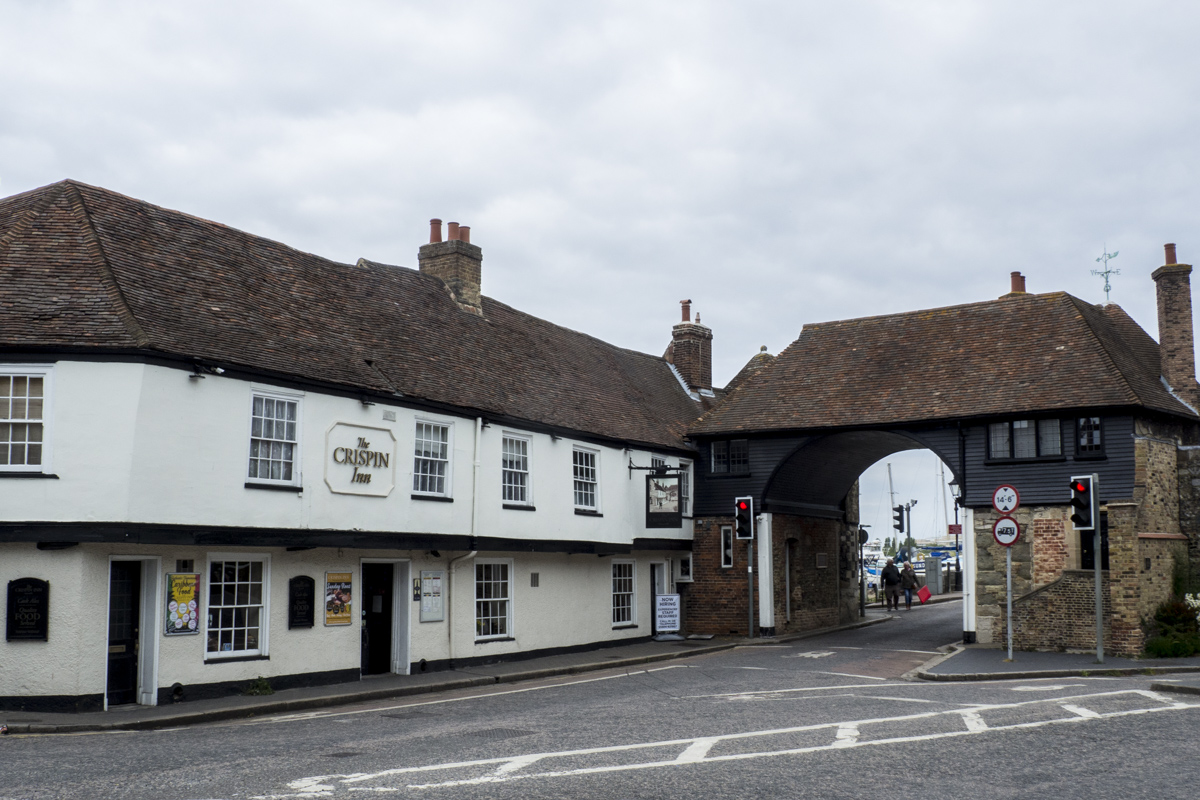
The Crispin Inn and Barbican Gate in Sandwich, Kent
Where to Stay
While visiting Sandwich I stayed at The Lodge at Prince’s Golf Club. Situated at the entrance to the golf course on the Bay of Sandwich the rooms overlook the shingle beach and the sea. I really appreciated the tranquillity of this place after a day exploring the nearby towns. I enjoyed my very comfortable light, spacious room and early morning walks along the beach.
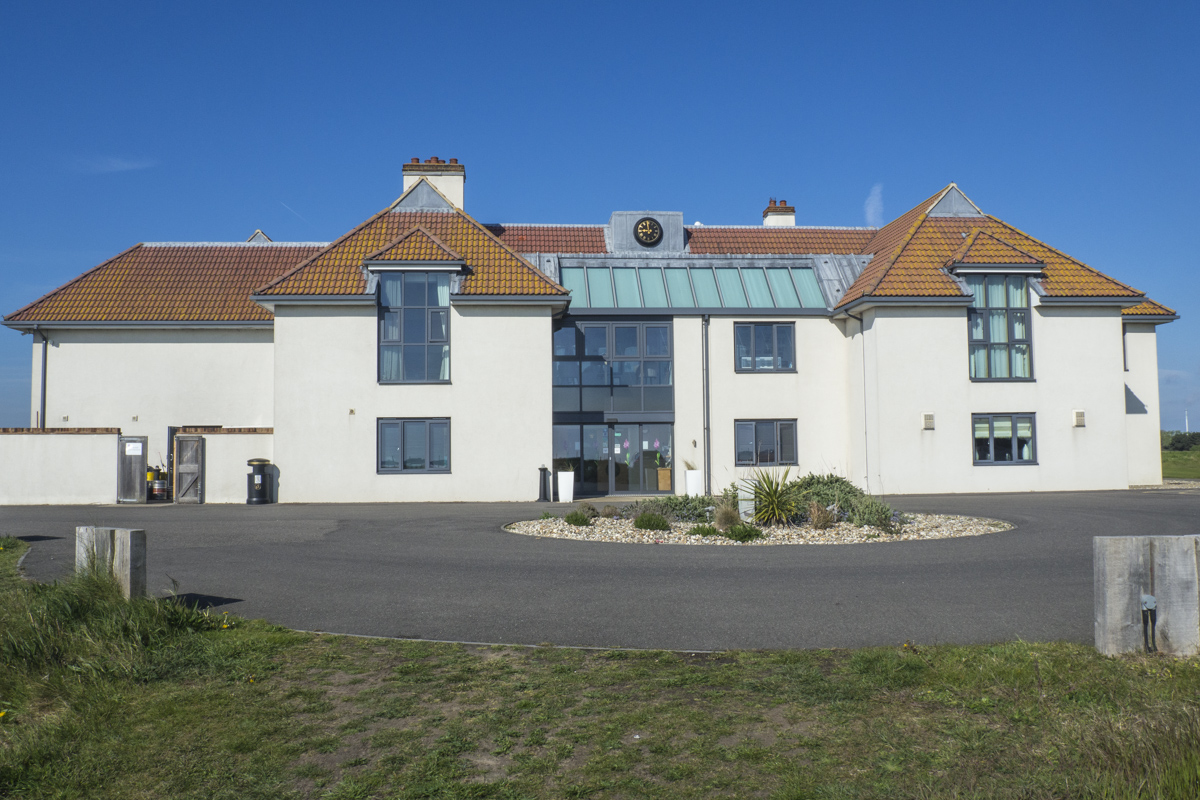
The Lodge at Prince’s Golf Club in Sandwich, Kent
Getting There
Regular train services operate from London St Pancras (direct) and London Victoria to Sandwich. It is also easy to get there by road thanks to the M20 that links into other motorways.
Available on GPSmyCity.com
This article is now featured on GPSmyCity. To download this article for offline reading or travel directions to the attractions highlighted in this article, go to Walking Tours in Sandwich on GPSmyCity
This article was based on the personal experience of Valery, an ExperiencedTraveller.